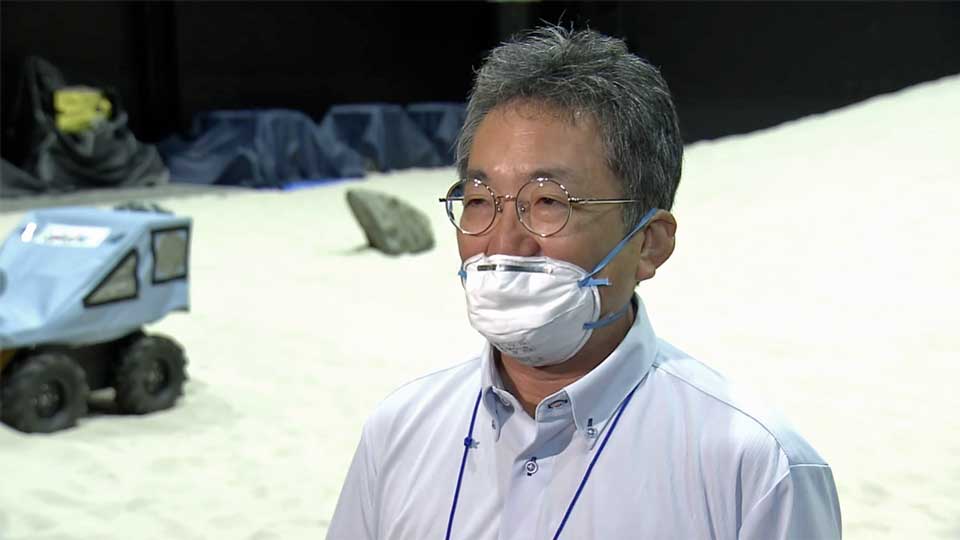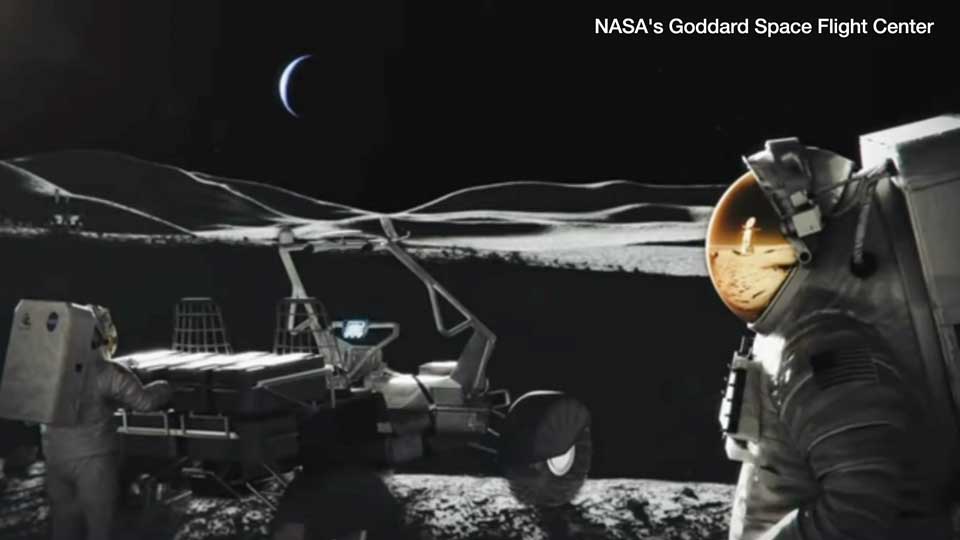On Thursday, researchers put the robots through their paces at a facility operated by the Japan Aerospace Exploration Agency, or JAXA. Using a reproduction of the lunar surface, they tested the machines' ability to carry sand and fill in holes with sand bags.

The robots are being developed as part of the US-led Artemis program, which aims to send astronauts to the moon for the first time in half a century.
Nagatani Keiji, a project professor at the University of Tokyo and leader of the research team, says that robots will work together in tandem to smooth out the lunar surface. The team aims to have them ready for action by 2025.

Eyeing the moon and Mars
2025 is the year in which the Artemis program aims to put astronauts back on the moon, with a view to establishing a long-term presence there. The program is spearheaded by US space agency NASA, but Japan and some European countries are also taking part.
The first Artemis mission ended in December 2022, when NASA's unmanned Orion spacecraft successfully completed an orbit of the moon.
The next mission comes in November, when four astronauts will embark on an approximately 10-day test flight, dubbed Artemis 2.
Looking further ahead, the program aims to use the moon as a stepping stone for the first manned landing on Mars.

Japan plans to send probe to moon
In a separate project, Japan's JAXA is preparing to send a probe to the moon as early as this August. If successful, it would be the first time the country has landed a probe on the lunar surface.
The Smart Lander for Investigating the Moon, or SLIM, will test precision landing technology and study lunar rocks.
It will use image-recognition technology to identify craters and other topographical features, enabling a spacecraft to land within 100 meters of its intended landing point.

The probe is equipped with a special camera that can measure the amount of iron on the moon's surface.
Data obtained by the probe will be used for the Artemis program, but JAXA also hopes it will provide insights into the moon's origins.
So far, three countries – the United States, Russia, and China – have succeeded in landing spacecraft on the moon.
